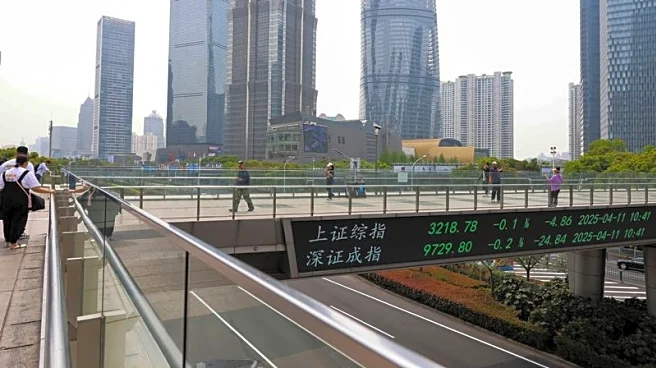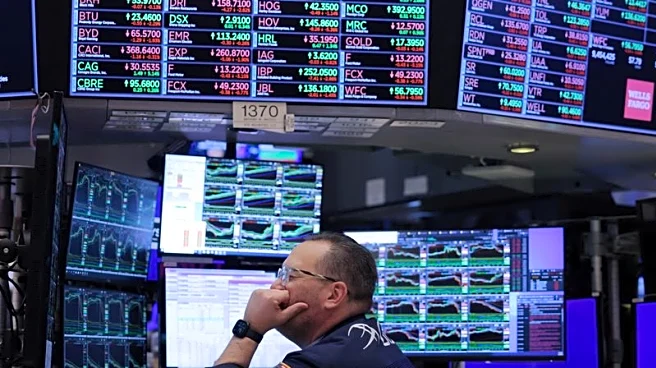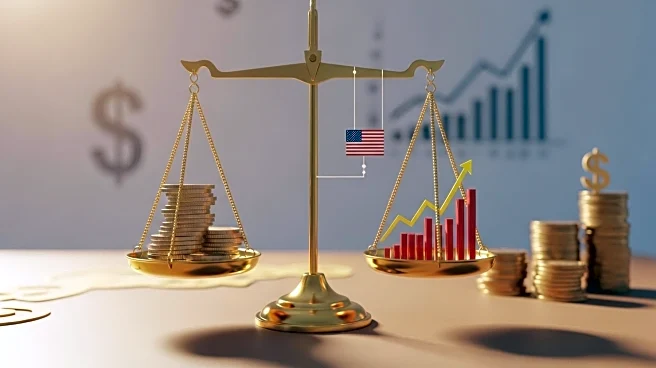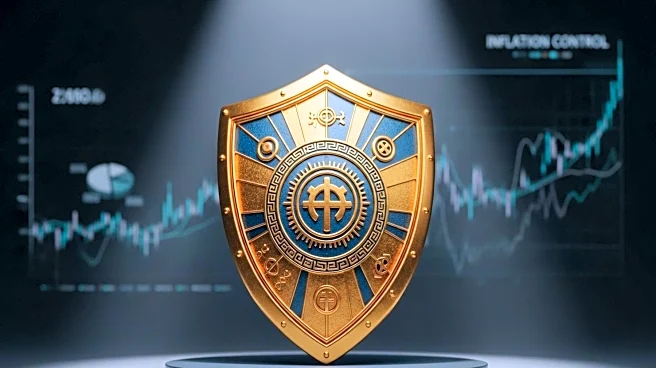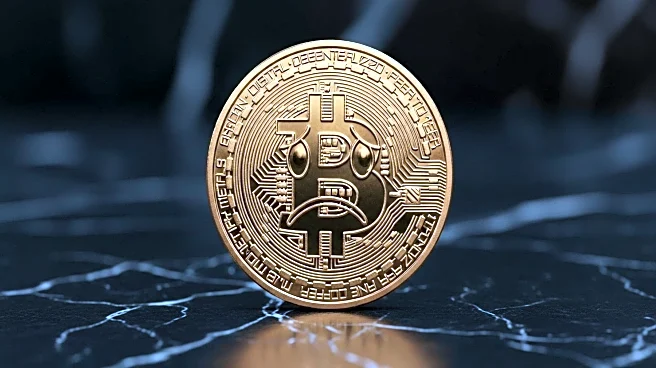What is the story about?
What's Happening?
Gold and silver prices have reached record highs, driven by renewed U.S.-China trade tensions and expectations of U.S. Federal Reserve interest rate cuts. Gold soared to a record high of $4,059.30 per ounce, while silver jumped to a record high of $51.52 per ounce. The surge is attributed to safe-haven demand amid geopolitical risks and economic uncertainties stemming from tariffs. President Trump imposed 100% tariffs on Chinese goods and announced new export controls on critical software, escalating trade tensions. Goldman Sachs predicts silver prices will rise in the medium term due to private investment flows but warns of heightened volatility compared to gold.
Why It's Important?
The surge in gold and silver prices highlights the impact of geopolitical tensions and economic policy on commodity markets. As safe-haven assets, gold and silver attract investors during times of uncertainty, affecting U.S. industries reliant on these metals. The price increase benefits mining companies with improved profit margins but poses risks of volatility. The Federal Reserve's potential rate cuts could further influence market dynamics, affecting investment strategies and economic stability. Stakeholders, including investors and policymakers, must navigate these shifts to mitigate risks and capitalize on opportunities.
What's Next?
The Federal Reserve is expected to announce a 25-basis-point rate cut in October, followed by another in December, which could further influence gold and silver prices. Fed Chair Jerome Powell is set to address the NABE annual meeting, potentially providing fresh rate cut cues. The ongoing U.S.-China trade tensions may continue to impact commodity markets, with potential reactions from global leaders and economic stakeholders. Investors and policymakers will closely monitor these developments to adjust strategies and anticipate market movements.
Beyond the Headlines
The geopolitical and economic factors driving gold and silver prices have broader implications for global trade and monetary policy. The U.S.-China trade tensions reflect deeper issues in international relations, affecting supply chains and economic stability. The Federal Reserve's rate cuts signal concerns about economic growth, influencing global financial markets. These developments highlight the interconnectedness of geopolitical events and economic policy, shaping long-term trends in commodity markets and investor behavior.
AI Generated Content
Do you find this article useful?





